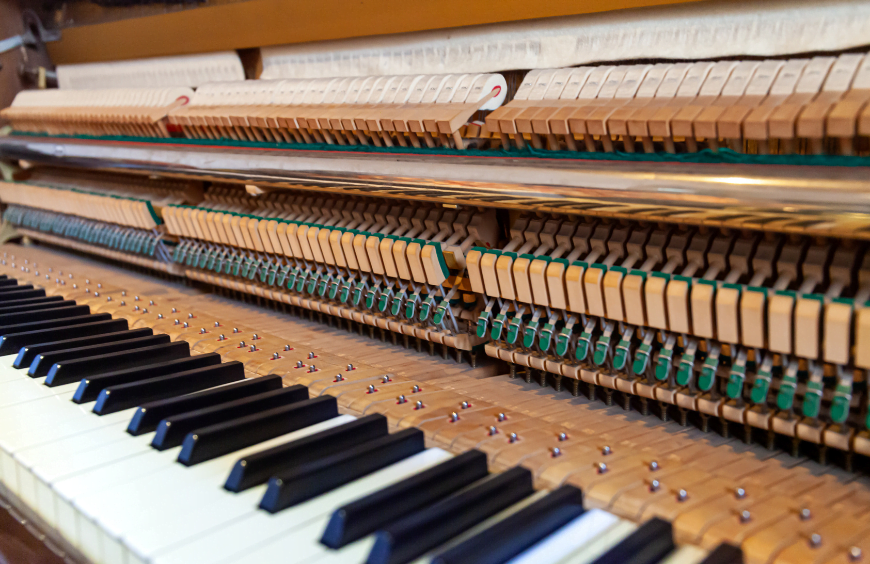No products in the cart.

Vertical piano (known as Upright piano), in which the soundboard and strings run vertically, perpendicular to the keyboard, thus taking up less floor space than the grand piano. There are different sizes for the vertical pianos but also there are different mechanism of frame, action, and string position.
In this post, we will summarize the string and dampers positions throughout the history of the upright pianos
The development of upright pianos and their string and damper positions has evolved over the course of history. Here is a summary of the key changes and milestones:
- Early Upright Pianos: The concept of upright pianos emerged in the late 18th century. The early models had the strings placed parallel to the keyboard, similar to the layout of a grand piano. The dampers were situated above the hammers, facing upward.
- Overdampers: In the early 19th century, a significant innovation occurred with the introduction of overdampers. These dampers were positioned below the strings, facing upward, and were activated by the keys. When a key was released, the damper would come into contact with the strings, stopping their vibration. The Overdamper also call Birdcage system is not so effective in cutting off the sound, as the dampers are positioned above the hammers, and make contact nearer the top of the strings, reducing their effectiveness.
- Underdamper: Is more efficient as the dampers are positioned below the hammers, and operate via damper-springs. This system is found in the better quality traditional uprights, and in all modern ones.
- Straight-Strung Uprights: Around the mid-19th century, straight-strung upright pianos became popular. In this design, the strings were arranged vertically, with the bass strings at the back and the treble strings at the front. The dampers were still located below the strings.
- Cross-Strung Uprights: In the late 19th century, cross-strung upright pianos were introduced. In this configuration, the strings crossed over each other, allowing for longer strings and a more even tone across the keyboard. The dampers were still positioned below the strings.
- Overstringing: Overstringing, also known as diagonal scaling, was a significant development that emerged in the late 19th century and continued into the 20th century. This technique involved arranging the strings diagonally, with the bass strings placed diagonally behind the treble strings. Overstringing allowed for longer strings and improved tonal quality. The dampers remained below the strings. In an Overstrung frame, the diagonal lengths of most of the strings provide a richer sound than its straight-strung counterpart.





